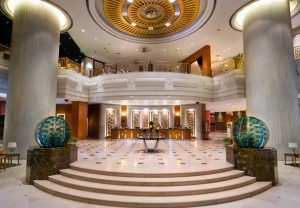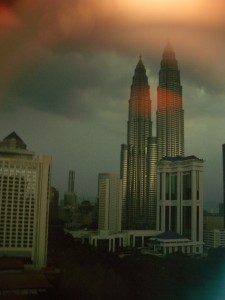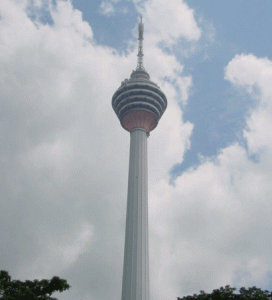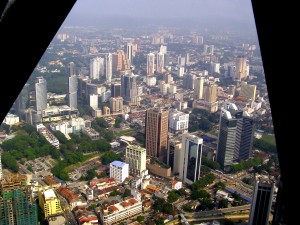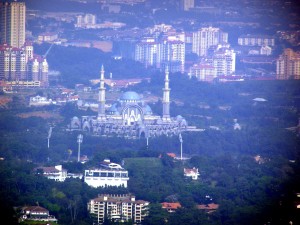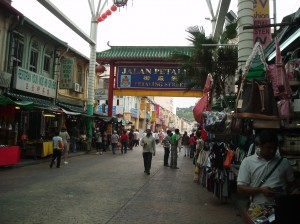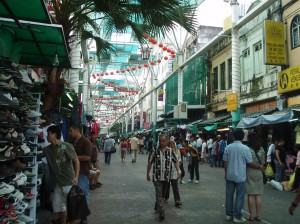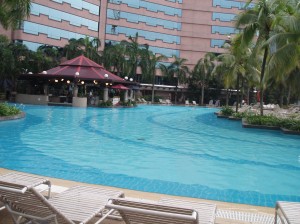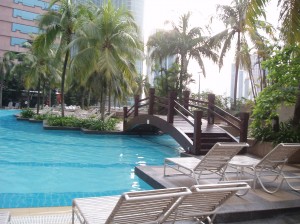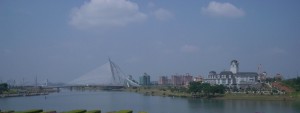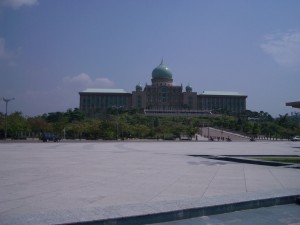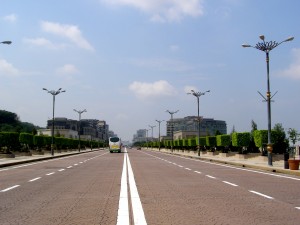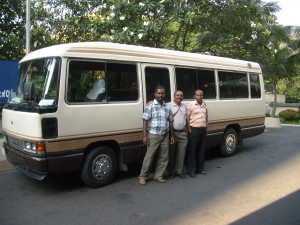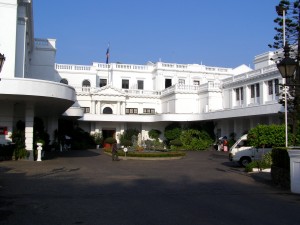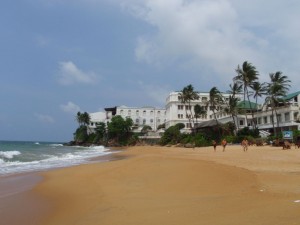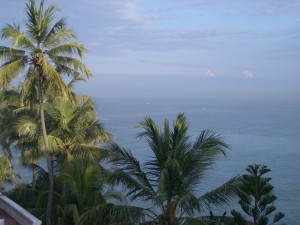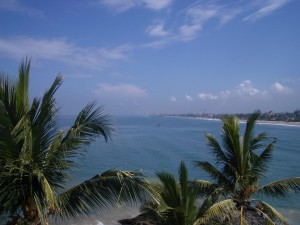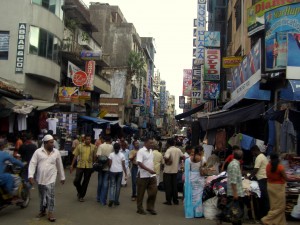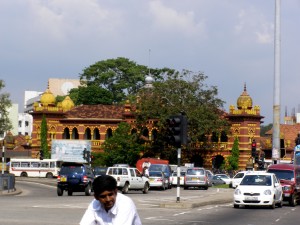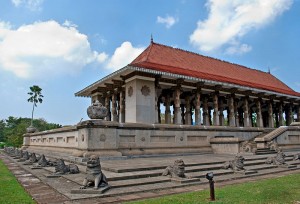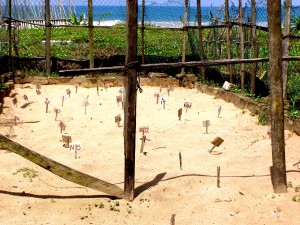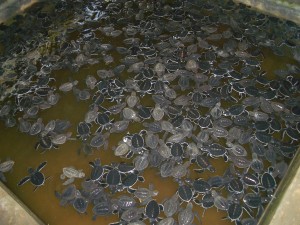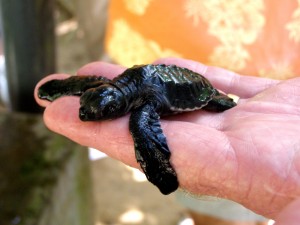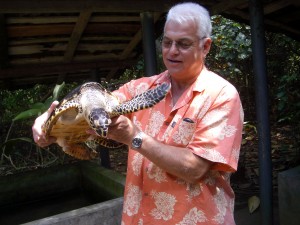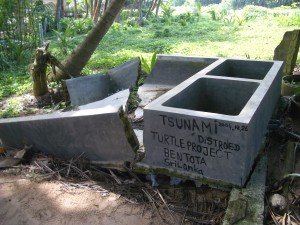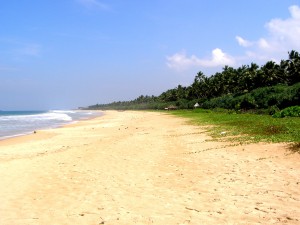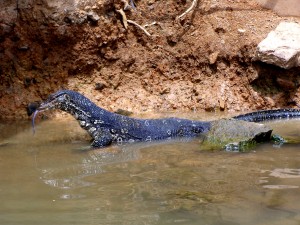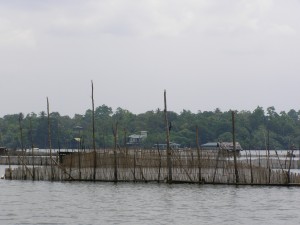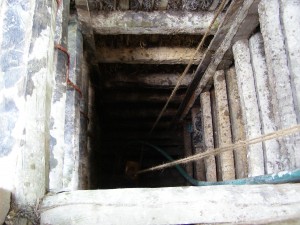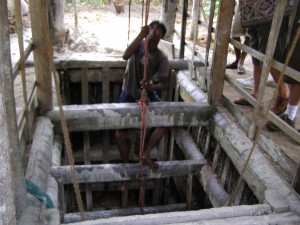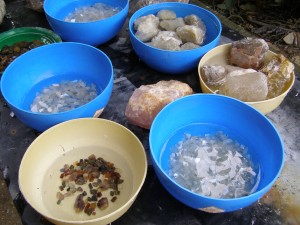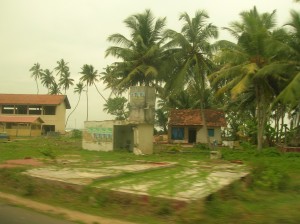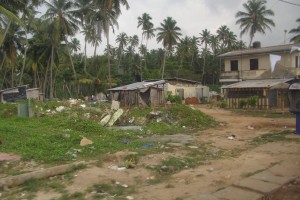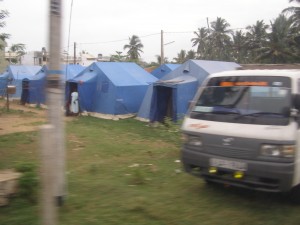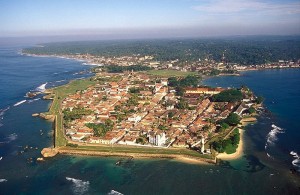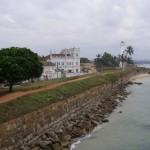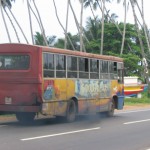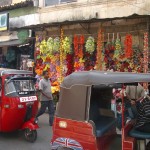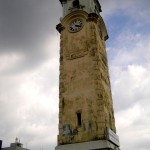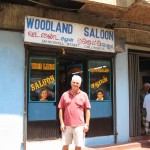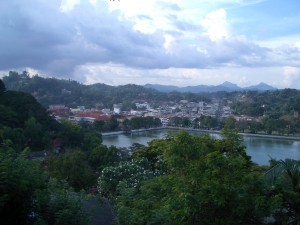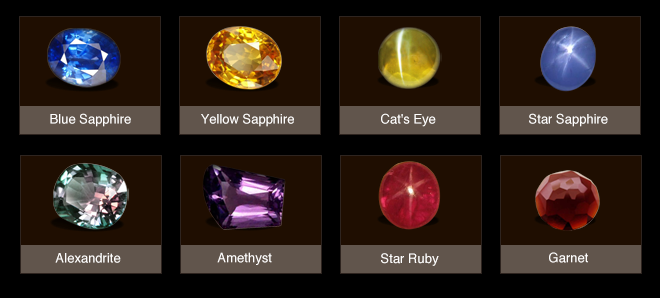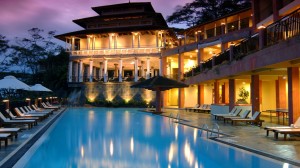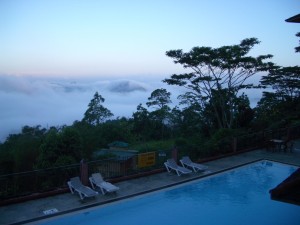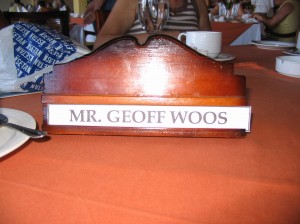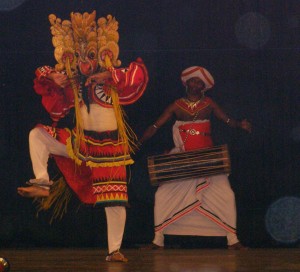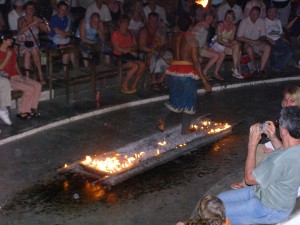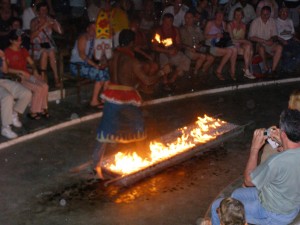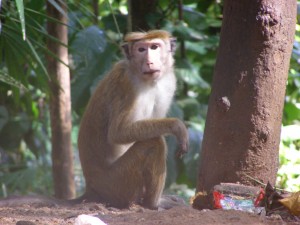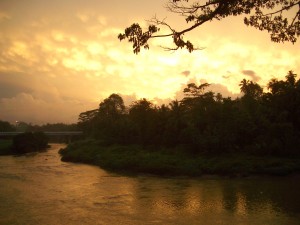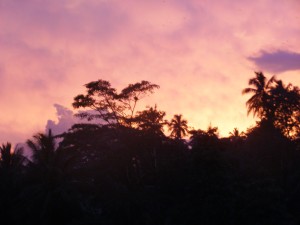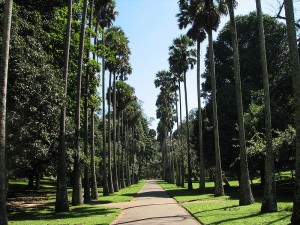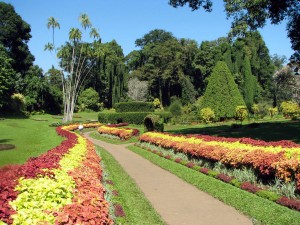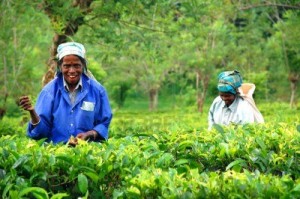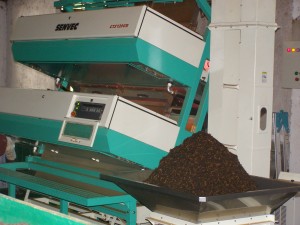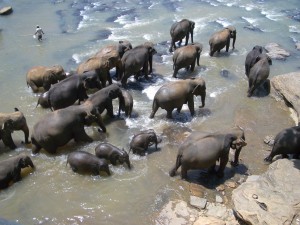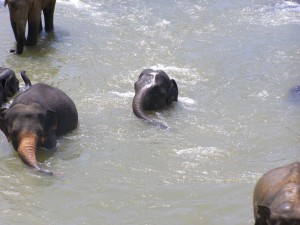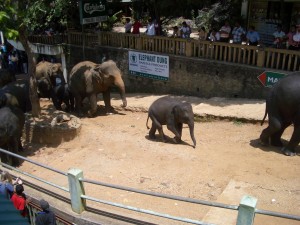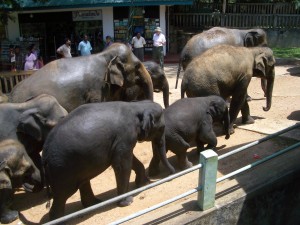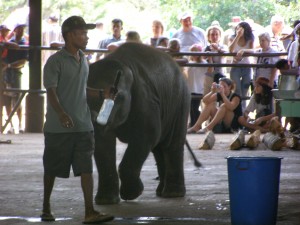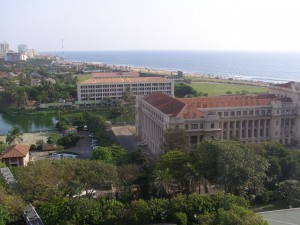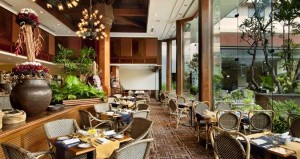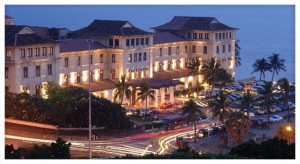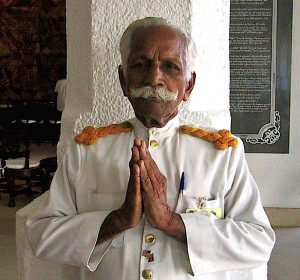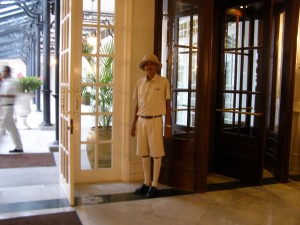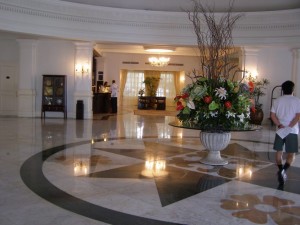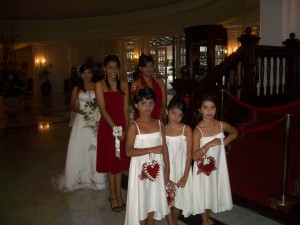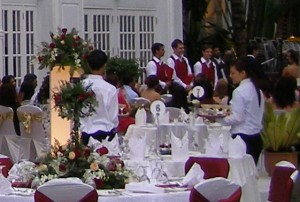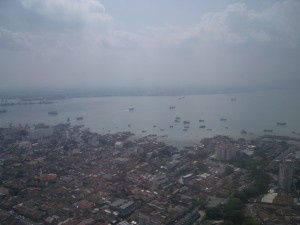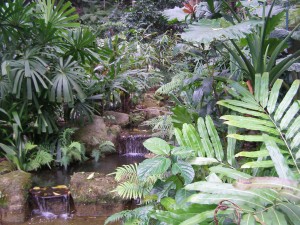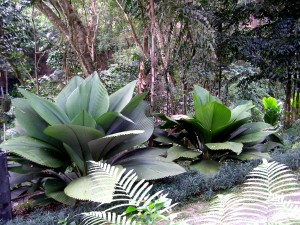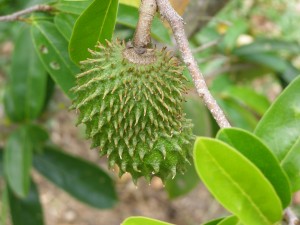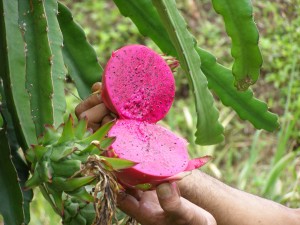2006
Sri Lanka 2006
A cup of tea ‘reveals’ you – a quote from a close friend of mine who laid great store in a cup of Ceylon tea. For the record he was aware that it should have been ‘revives’, not ‘reveals’.
I took the group at their word when the asked what was happen next year and started planning a trip to Sri Lanka. It was in the 60’s that I first visited Ceylon, as it was called then, and I had always promised my wife that one day I would take her there and show her the dewdrop at the end of India.
A number of airlines went to Colombo in Sri Lanka, via their home ports of Singapore, Bangkok, Hong Kong and of course our old favourite Kuala Lumpur.
From an airline point of view from Australia, Sri Lanka is a terminus, a place to arrive and leave at very unsocial hours, unless one breaks the journey so as to arrive at a civilised time.
Flying from Sydney to Colombo passengers had to transit an Asian port, which meant that we would have a very long day, regardless of the airline.
Taking in to account the cost of the ticket, plus an over night stop mixed with the best flight time the following day, I decided on Malaysian Airlines again. The problem was that flying from Sydney we would arrive in KL around 9.00 pm, and the connection to Colombo was schedule to leave after 11.00 pm, arriving Colombo after midnight local time, after a three hour flight. Our bodies would be around 5.00 am Sydney time, so this was not an attractive schedule. So a stop over was the answer.
I booked MH to Kuala Lumpur and also four nights at the Renaissance Hotel in the city.
Renaissance Hotel foyer
In 2004 my wife & I stayed here for a couple of nights on our way home from the UK (see my 2004 blog), we stayed again in 2005 with our six friends (see Malaysia blog 2005) and we thoroughly enjoyed out stay on both occasions. This time we were disappointed when we were shown to our room on the 16th floor, which was a smoking room instead of a non-smoking room that we booked. Plus our bedding configuration was two single beds instead of the double / king bed which I had ordered. A phone call soon had us changed to the 14th floor, which was exactly what we had booked. The room also overlooked the Petronas Towers.
Taken at the start of a thunderstorm from our bedroom window
The following day we hired two taxis to take us to the Menara Kuala Lumpur tower, which stands on the top of Pineapple Hill. The tower at 421 meters, with an observation platform and revolving restaurant gives the visitor a 360-degree view of the city of Kuala Lumpur. The tower its self is used as a telecommunication tower.
Views from the observation level
The 421 meter tower appears higher than the Petronas Towers, but it isn’t, because it stands on Pineapple Hill or Bukit Nanas in Malay. This hill contains the last remaining virgin tropical rain forest in Kuala Lumpur. Bukit Nanas is also the name of the local Monorail station. To get to the base of the tower I would suggest a taxi rather than attempting to walk in the heat and humidity. At the base of the tower we bought tickets to use the high-speed lift to the observation level. There are also shops at ground level, toilets and a theatre where we watched a short film of the history of the tower.
The surrounding tropical forest was gazetted as a reserve in 1906 and is considered to be the ‘lung’of KL.
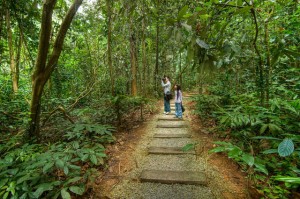
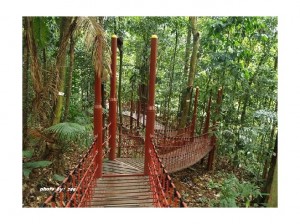
The afternoon or evening is the best time to visit Patling Street – a street to fill any female’s heart with joy.
There are hundreds of stalls and small shops, where haggling is the name of the game.
Of course after shopping we have happy hour around the hotel pool – buy one get one free time.
The Renaissance pool was very good. It was large enough for people to swim for exercise, and areas are shallow enough for young children to play in safety. The red roofed arc is the Happy Hour bar and café. In the evening we had drinks and a meal around the pool. It was pleasant to sit at our table and watch the tropical downpour in the evening. Talking was out of the question due to the noise of the rain.
I’d arranged for a guide and a minibus to take us site seeing to Putrajaya, 25 km south of KL. It is a planned city, and serves as the Federal administration centre of Malaysia. The capital is still Kuala Lumpur, which is where the King resides, and is the seat of Parliament, the financial and commercial centre.
I have always been very impressed with the road system of Malaysia. They are large, high speed and well planned. The 25 km from Kl to Putrajaya didn’t take long as we sped there via new freeways. On our arrival the one thing that sticks in my mind is the HEAT. It hit us as we left the air-conditioned vehicle.
Putrajaya has a network of interconnecting open spaces and the whole place reminded me of a futuristic film set with wide open spaces and large boulevards. In parts it was still be built, and the public servants had only moved in the previous year, so the comfort feel of a small town had not yet been created by the people. It was too new. To help with keeping the place cool they had built a 650-hectare man made lake. It was impressive.
Putrajaya Lake and the building on the right with the flag flying is Royal residence of the Sultan of Selangor
Office of the Prime Minister One of the boulevards
Mid afternoon we returned to KL because we had booked an evening meal at the Bijan Bar and Restaurant. It had been recommended to us by expat -Aussies who used to live in KL. The restaurant specialised in traditional Malaysian food. Our son in law, who was working in KL on a short contract, managed to join us for the evening to celebrate his birthday.
The following day was a day of shopping, which brought to an end our shirt break in KL.
It was an early start – alarm at 4.30 am, to be at the airport (45 minute drive) for the 09.25 am flight to Colombo in Sri Lanka. We flew Sri Lanka Airlines and due to time differences we arrived at 10.25 am after a three-hour flight.
I’d researched Sri Lanka (still Ceylon in my mind) and contacted a few local travel agents for prices and to discuss an itinerary. In the end I decided on Don Voyage Pvt Ltd, because I found the chap I was dealing with, via e-mails, extremely helpful in many different areas, from hotels to places of interest. His name was (still is I suppose) Donovan, but he had nothing to do with the name of the company. Our planned visit would be 15 months after the tsunami, (26th Dec 2004), and I was concerned that holidaying in Sri Lanka might be ‘unacceptable’ to the locals after losing so much. When I voiced my concern to Donovan he was adamant that we should come and see the damage, and how the people have coped. Plus he said that the local tourist industry was hanging on by its fingertips, and that they needed tourists to get people back to work.
After immigration & customs we entered a colourful mad house of people shouting and gesturing in the arrival halls. The air conditioning system was losing the battle against the humidity of the outside world. I was back in Ceylon – now Sri Lanka – after nearly forty years, it had the same smells, the same heat, the same friendly faces – I loved being back, and only hoped that I hadn’t over sold the holiday to my wife and our friends.
A quick glance around and I was able to spot a sign being held high over the heads of the crowd with my name in large letters welcoming me to Colombo, it was Donovan!
Along with Donovan was our driver, who helped the ladies with their bags, as we made our way outside. We were asked to wait on the pavement as the driver ran to get the transport.
It was quite a large bus for the eight of us – from memory I think it would seat around 20 people. Donovan is in the middle, between the driver and the guard. The permanent security guard looked after the bus, and our belongings, while we went sight seeing. Each time we left the bus to see a site the driver would tidy the inside and clean the windows, he was very proud of his bus. They were three great guys who added to the overall enjoyment of our visit to Sri Lanka.
The trip from the airport to our hotel, Mount Lavinia Hotel was ‘only’ 43 kms (about 25 miles), but it took us over an hour and a half due to heavy traffic. I’d picked the hotel because as a cadet during my time at sea I’d visited the Mount Lavinia Hotel for a genuine Sunday curry lunch, and I wanted everyone to experience the location, and the local food.
This hotel used to be the Governor’s home in 1805 and remained so for many years.
Entrance to Mount Lavinia Hotel
It is located on a small promontory jutting out in to the sea, and overlooking a magnificent beach lapped by the Indian Ocean. The feel and design of the hotel was old colonial, but it had all of the 21st century requirements.
View from our room, with Colombo in the distance.
In consultation with Donovan he and I had come up with an itinerary that maximised our time without wearing us out. We factored in ‘down time’ so that people could do there own thing.
During the afternoon of the day of our arrival we had a short tour of the surrounding areas and parts of Colombo. When the Portuguese controlled Ceylon the locals called the port Kolamba, which the Portuguese thought was a Singhalese word meaning ‘mango tree’. An alternative thought is that Kolamba is an old Singhalese word for port or ferry – take your pick.
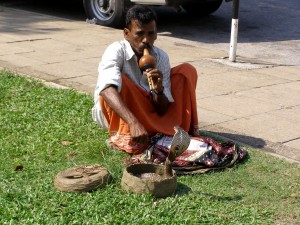 During our tour of Colombo we came across this chap for the cost was a few cents to take his picture of him and his pet snake.
During our tour of Colombo we came across this chap for the cost was a few cents to take his picture of him and his pet snake.
It was an interesting two and a half hour tour, and brought back heaps of memories for me.
Erected to commemorate independence from the British in 1948.
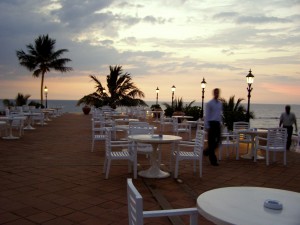 That evening we ate in the hotel overlooking the ocean.
That evening we ate in the hotel overlooking the ocean.
Up at 5.30 am (some holiday) as we planned a long day’s drive to Galle, about 100 km (60 miles) south of Colombo. To drive straight through would take about an hour and a half, but we had plans for a few stops before reaching Galle.
Our first stop was to a turtle sanctuary where they rescued turtle eggs from fishermen and birds. The sanctuary hatches the eggs and releases them in to the ocean.
Eggs buried in the sand Day old turtles
One day old Older and bolder
Turtle project virtually destroyed during the tsunami, this is the beach where the turtles are released back in to the ocean.
From the turtle sanctuary we moved on to a river safari where we saw water monitors and locals fishing techniques.
We arrived at a small village where we were shown how they produce cinnamon by stripping the bark from the branches of a cinnamon tree. Of course we bought some, and managed to get it through Australian quarantine – legally! The cinnamon we bought was curled bark, not the ground powder.
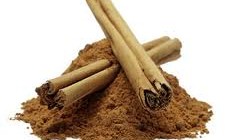 A gem mine was next, with the obligatory gem shop next door, but we found the shop to be quite expensive. It was interesting to see how they mined and polished the stones.
A gem mine was next, with the obligatory gem shop next door, but we found the shop to be quite expensive. It was interesting to see how they mined and polished the stones.
Mineshaft – health and safety eat your heart out.
Along the main road to Galle we couldn’t help but see the result of the tsunami.
Many people were still living in emergency accommodation
Finally we reached Galle
Galle fort is the best example of a Portuguese fort in Asia, and it is also the largest remaining Asian fortress, built by a European nation.
The local ladies produce beautiful lace work and my wife regretted not buying the offered tablecloth edged with a fine example of the lacework.
We had a very nice lunch in the restaurant within the white building in the second picture.
The one thing that stood out during our round trip to Galle was the amount of traffic on the road. Every kind of lorry / truck that had seen better days or should have been in a museum, plus innumerable tuk – tuks , and everyone using their horn. The use of the horn appeared to be compulsory, and perhaps part of the driving test to obtain licence, but nobody seemed to get too angry, just noisier.
A spot of shopping, for the ladies, was called for the next day and we were all bussed in to the centre of Colombo and left to our own devisees. The ladies hired a taxi that waited for them outside every shop that they visited, and the total bill for the morning came to $15 between the four of them. In the meantime the men wandered off towards the dock area, because I wanted to see if the area had changed since my last visit nearly forty years ago. As soon as I rounded a corner I recognised the place – it hadn’t changed, and the one thing I did remember best was the famous Khan clock.
The Khan Clock Tower marks the entrance to the Pettah market area of Colombo. The clock looked like it was showing its age since my last visit.
Had to take a picture of this . . . .I never knew we had a shop in Colombo.
Pettah market area was interesting – we were looking for some super glue (one of the group had damaged his glasses) and bandaids (blisters on the feet from walking). A man offered to help us find the objects that we required, and of course we were very suspicious of his generosity. But, as there were three of us to his one, we followed him through the market area. He would dive in to shops and come out again quickly shaking his head. Super glue was hard to buy in this market.
Eventually he did find a shop that stocked super glue and next door was a shop that would sell us a single foot plaster for about ten cents. It was normal to sell them singularly rather than in a packet because the locals didn’t wish to buy a full box (too costly) and they only wished to use one at a time! We bought both items and offered our ‘guide’ payment for his help – which he refused! Our faith in human kindness was restored. So we offered to take him for a drink, which he accepted.
In a small bar (two tables and four chairs) we ordered beers and our guide asked if he could also have a cigarette. None of us smoke so we told him to order his cigarettes and to put them on our bill. He shouted to the waiter in Hindi, who nodded in the way of Indians (Hindi was the language on the ships in which I sailed – we had Indian crews). A few minutes later the beer arrived along with a single cigarette, which our new friend lit and sat enjoying. We asked him about the packet of cigarettes and he told us that many people sold cigarettes singularly, because they made more money, and the buyer was happy because he couldn’t afford a full packet.
Our guide was a seaman, who was waiting for a ship – the system was that after he had completed a voyage he went to the back of the queue and waited for his turn to come round again. His family lived in the hills, it being cheaper than living in the town. He spent his time hanging around the dock area hoping for a berth. We talked more about the sea and I mentioned that I’d sailed in to Colombo in the 60’s on BI ships (BI = British India Steam Nav Co) and it was very gratifying to hear that he knew quite a lot about BI before they merged with P&O in the late 70’s. At the end of our ‘rest’ period we parted, as he wanted to get back to the dock gate area on the off chance of being picked for a voyage (queue jumping, perhaps?). He was happy with his packet of cigarettes.
Nothing had changed as far as ‘pool’ seamen – in 1966 as 3rd Mate, the ship I was on docked in Singapore, and I was told by the Captain to visit the seaman’s ‘pool’ and find three sailors, because we were short handed for the next voyage to Borneo. I only hoped our new found friend had more luck than the forty two seamen I had to leave behind, after picking the three I wanted.
Tonight would be our last night in Mount Lavina, so we decided to have our evening meal on the beach. The hotel has a fish restaurant on the sand – a beautiful place where you could drink in the view as well as the cold beer, and watch the sun set as your meal is cooked just behind you.
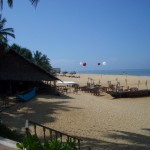 The beach restaurant – daylight & sunset
The beach restaurant – daylight & sunset 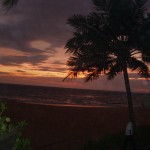
After breakfast next morning we checked out of the Mount Lavinia and boarded our bus for the journey to the old capital Kandy, which is located in the hills. It is 465 mtrs (1526 ft) above sea level, which helped to make the climate far more pleasant for Europeans.
Kandy city and part of the lake
On the way we passed through a number of smaller towns and villages, which were a lot cleaner than many of the streets of Colombo. The surrounding countryside looked very fertile and well attended. We did have to slow down once for an elephant ambling along the road with its handler. Not a common site in Sydney. A short time later the bus pulled in to a spice farm where we bought curry powder and other spices, and I bought some spiced oil to alleviate muscle pain. I suffer from pains in the back and the oil does seem to help, but the oil does have a distinctive smell. I would never use it if we were expecting guests.
Just before we reached Kandy we stopped at a gem museum. Sri Lanka is well know for it gems; particularly sapphires. One Sri Lanka 400-carat sapphire is in the Imperial Crown of Great Britain.
It wasn’t long before we pulled up in front of our hotel on the outskirts of Kandy – the Amaya Hills Hotel, which is a beautiful hotel looking towards the Heerassagala Mountains.
A view of the mountains was available from each of our rooms. We were high enough that the early morning mist was below us, and as the sun climbed, the clouds of foggy white melted whirled about the valley in the heat, creating a dramatic backcloth while we had breakfast.
The hotel must have had a problem with my name. This was the sign on the table allocated to our group of eight.
After checking in, and a quick wash and brush up, we reboarded our bus to see a cultural show. The show consisted of dancers, tumblers, fire-eaters and firewalkers.
All the acts were very good, but I’ll let you guess which one was the most popular.
A Buddhist Temple followed the culture show before we were taken to a restaurant for our evening meal.
On entering the restaurant I noticed that only one table was in use, and the customers looked like locals on their way home from work. We were shown to a long plastic cloth covered table, which was a little way from the local diners. We sat and waited for the waiter who came and presented us with cardboard menus listing fish and chips, chicken and chips, cups of tea etc – it was a seaside type menu from an English summer holiday establishment, and this is what the owner of the place thought Europeans would like to eat.
Donovan had been invited to join us, but he said he would feel easier if he ate with the driver, which we accepted. The guard was with the bus and his meal had been taken out to him. I called Donovan over to our tables and showed him the menu. He asked what we would like, and I told him that we would like the same type of food that the locals would eat.
It turned out that Europeans seldom asked for local food as they found it too spicy and were frightened that an upset stomach would ruin their holiday. Fortunately the group loved spice food and we just wanted local food, and we would leave it to the cook to determine the dishes and the spiciness, but it had to be local food produced as if it was for a local family, and in the mean time can we have some soft drinks and beer please.
A quick conversation between Donovan and the waiter followed along with shouts to the kitchen area. The drinks arrived very quickly.
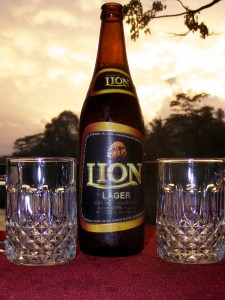 Very cold, very nice, and it slipped down without a problem.
Very cold, very nice, and it slipped down without a problem.
Shortly after, the food started to arrive – meat dishes, vegetable dishes, spicy condiments, plenty of rice and the taste was out if this world. The food was spicy, but not ‘chilli hot’, just the right amount to add the taste without having to cool the mouth with sugar or yoghurt. It was one of the best-curried meals that I have had anywhere.
When I was at sea; at lunchtime we had a choice of Indian food or British food, the choice being curries or standard British food, I always picked the Indian dishes. The cook for the officers was from Goa, (now part of India) so the officers’ curries were genuine. The crew had their own galley and their own cook. The separation of food preparation was not based on officers and other ranks, but on religion. The officers’ cook, being from Goa, would have been a Christian (mainly Catholic, due to Portuguese influence) and the crew might have been Hindu or Muslim, so the Company made sure everyone was looked after correctly. This was well before the PC brigade had thought of becoming a nuisance.
Finally we finished our meal and we all sat back with smiles of contentment on our faces – we couldn’t believe the standard of the food. All good things come to an end and I called for the bill. When I worked it out (it being in rupees) it came out to about $8 per person, for everything, food and drinks. I called Donovan over and asked him to ask the waiter if the bill was correct perhaps they had missed off the drinks or some of the food etc. Donovan took the bill and went to see the owner and on his return he told us that if we pay the price on the bill the owner would be very happy! At least the waiter & the cook received a decent tip.
Our second day in Kandy was also our final day. A bush walk through a rain forest on the outskirts of Kandy – the monkeys were not afraid of us.
It didn’t matter how careful we placed our feet when walking along the path, those with open sandals managed to pick up leeches, which were awkward to get off as none of us smoked. Touch a leech with a lit cigarette, and it falls off the skin. Fortunately they were not as large as those portrayed in the film ‘African Queen.’
During our walk we came a cross a number of couples sitting quietly and talking or just holding hands, and this was 9.00 am. Donovan told us that meeting the opposite sex can be very fraught due to custom and parents, so a few minutes together, before going to work, puts a glow on the day, and nobody (parents) bothered to visit the Forest Reserve so early in the morning except perhaps tourists.
Back to our bus and we set off for Hunas Falls about 22 km (13 miles) outside Kandy. It was a long drive due to the winding narrow roads. The scenery was spectacular as we climbed the mountain roads. The time that we visited the falls was the dry season, and the amount of water was not what we expected, although there was enough to give us an idea of what it must be like in the wet season. The area around the falls is beautiful, and the local hotel is famous as a honeymoon hotel. The hotel is very modern and had all that a visitor would require. A short tea break at the hotel and we were off again for a spot of gem shopping in Kandy.
While the ladies went silk clothing shopping, and checking the gemstones, three of us (males) went for a Sri Lanka steam massage. This was the most unusual ‘cleansing’ that I have ever had.
We stripped and were offered a small piece of soap and a towel and asked to shower. After the shower and wrapped in our towel we were given a massage and a ‘pummelling’ to get the blood flowing. After about thirty minutes we were taken in to a steam room, which wasn’t a traditional steam room, but a coffin like structure made from bamboo. The ‘coffin’ rested on supports at each end. Each of us was placed in our own ‘coffin’ with just our heads showing, and the lid was closed. Heat was generated (by fires??) under the coffin and we started to ‘cook’. An attendant moved quietly between the three ‘coffins’ in case one of us became distressed at which point he would release us from our confines. I think we were cooked for about twenty minutes or more after which we were taken back to the showers for a clean-up. After using the remaining soap it didn’t matter how long I stood under the cold shower I could not stop sweating.
We paid our torture fee and left feeling completely washed out, plus I couldn’t stop sweating. Fortunately there was a restaurant next door to the massage place, so we knocked and were shown to a table. The restaurant was closed (mid-afternoon), but they were happy to sell us cold drinks. I don’t know how many 600 ml bottles of Lion beer it took to stop me sweating, during which I stood under a large fast turning ceiling fan for at least forty-five minutes.
Soon after I started to cool down Donovan arrived with the ladies and we returned to our hotel for a wash and brush up before dinner.
The restaurant that evening was at the back of an amusement park – with a go-cart track – the track was closed. It was on the banks of the Mahaweli River, the longest river in Sri Lanka.
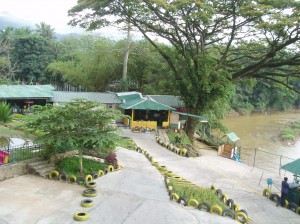 We were seated at a long table so that we could over look the river and watch the sun set. The colours changed all the time.
We were seated at a long table so that we could over look the river and watch the sun set. The colours changed all the time.
The meal was pleasant, but not as good as the previous evening.
The following day it was goodbye to Kandy as we headed for Colombo, but this time to stay in the city. Before we left the Kandy area we visited the local Peradenyia Botanical gardens. It is a large well-kept garden with some very interesting trees, must see for any visitor.
Initially founded in the 14th century during the reign of Vikrama Bahu III and later developed as a botanical garden by the British in the early 19th century. It houses over 4000 labelled species of flora.
Of course we couldn’t leave the area without visiting a tea plantation. We had a conducted tour of the plantation from the picking to the processing and of course we tried various teas.
Our final stop before Colombo was at the elephant orphanage. The orphanage was created in 1975, with five orphans, to house and feed baby elephants that had been abandoned by their parents. There are now over seventy elephants.
We arrived in time to see them playing in the river
They all seemed to know when to come of the water when the March of the Elephants (from the Walt Disney films) comes to life.
As you see from the advert about paper – nothing is wasted.
To be so close to them was wonderful, and later if you wished you could ‘stroke’ them, not sure if they felt our gentle stroking considering the whacks they had from their handler when he wanted their attention. The baby one had just been fed cow’s milk and wanted more so he was after the ‘feeder’.
We arrived at the Hilton hotel in the centre of Colombo at 4.30 pm. Lovely hotel and from our rooms we had great views across the town to the ocean.
This day was a full moon and on the full moon every month it is a public holiday in Sri Lanka – Full Moon Poya Day. We knew that we wouldn’t be able to buy a beer outside the hotel because on this day every month the selling of alcohol is illegal. So we decided to eat in and went down to the bar for a pre-dinner drink – they only served soft drinks! Before I made the booking I knew of this holiday and I asked if the ban extended to hotels where foreigners were staying. When I asked I knew that I could buy beer in hotels in the Middle East, if I was staying in a hotel because I was a foreigner. I was told that the same system was in force in Sri Lanka – well it isn’t – or wasn’t during our stay in 2006. So it was back to our room and a raid on the mini-bar before eating in the Curry Leaf in the gardens of the Hilton Hotel.
It was a buffet style of dinner – very nice indeed, especially having the opportunity to sample different dishes from all over Sri Lanka.
The following day it was present shopping for the ladies while the males sampled the views from the Galle Hotel (which isn’t in Galle, but Colombo), built in 1864.
The doorman of the hotel is Mr K. Chattu Kuttan, and at 86 he is still working. He joined the hotel in 1942 as a waiter, and fifty years later he was the doorman, and is one of the most recognised doormen in the World. (He was still at work in 2010 when he was 90, and as far as I can make out in February 2013, he is still on duty at 93).
Later we visited the Pettah market again and we were approached by a number of people offering us super glue and foot plasters! Word must have got around that these two products are the next big ‘thing’.
The next day was our last in Sri Lanka, and we managed to get an extended check-out until 5.00 pm. During the morning we walked to Laksala, the Government run store, which was very reasonably priced. We bought souvenirs and ended up dealing with four people. One person is always ‘hovering’ while you check out the goods – don’t know if they expect you to do a runner – as soon as we picked the item the ‘hoverer’ showed us to the counter where another lady took the item and began writing up an invoice. A second lady behind the counter wrapped the goods in fancy paper and placed it in a large carrier bag. We were then escorted to another lady who accepted our cash (she was behind a grill) and wished us ‘Good Day’ as we left. I suppose it helps with unemployment. All the ladies were very pleasant, but it did seem a little OTT after doing every thing your self in the Sydney shops.
Our flight left Colombo at forty minutes passed mid-night – a really unsociable time because we were flying in to the future, our destination being Kuala Lumpur, but the flight was going via Singapore. It was a long flight, although only three hours to Singapore with forty minutes on the ground and then an hour to KL. We arrived in KL at 8.40 am local time. Our next stop was Penang.
By the time we arrived at our favourite hotel – The Eastern and Oriental (commonly known as the E & O) it was mid-day. We had a quiet afternoon and met in the bar for Happy Hour and decided to eat in the hotel at Sarkies Corner – it was a buffet style, and we booked our table outside over-looking the Melaka Straits. I never get tired of the view as cruise ships and cargo ships arrive or leave Penang harbour, and sail past the E & O.
Doorman and foyer
We were fortunate to see a wedding taking place in the hotel that evening. I asked permission to take photos.
The following morning we visited Komtar the tallest building in Georgetown, the capital of Penang State. The views across the Melaka Straits and the town were well worth the effort, if a little hazy due to the heat.
We booked two nights at the E & O and two nights at the Holiday Inn at Batu Ferringhi, which is about thirty minutes drive outside Georgetown. The reason we did this is because for the price of one night at the E & O we would receive two nights at the Holiday Inn. It seemed a good idea when we made the arrangements, and this was the first time that we had stayed at the E & O. After the holiday was over we all thought that we would have enjoyed it more if we had stayed three nights at the E & O and skipped the Holiday Inn completely – there wasn’t any comparison between the two establishments. One was five stars and the other three stars, and it showed.
While at the Holiday Inn we took a day trip to the Spice Gardens and the Fruit farm. Both were interesting places, even though I found the Spice Garden , which was enclosed with over hanging tropical plants extremely humid. The Fruit Farm, were we received a lecture on all the different fruit that they were growing, was also interesting. This location is high up on a hill with views across Malak Straits so it was much less humid.
Plants in the Spice Garden
I think this is a soursop, which as a drink is a great thirst quencher. The pink fruit is a Dragon fruit.
The last night of the holiday was spent at the markets of Ferringhi beach area for those last few souvenirs.
The following day we flew to KL and stayed in the transit lounge until our departure time at 11.00 pm for Sydney – the holiday was over.


![lk[1]](http://www.geoffwoodland.com/wp-content/uploads/2013/02/lk1-300x163.gif)
